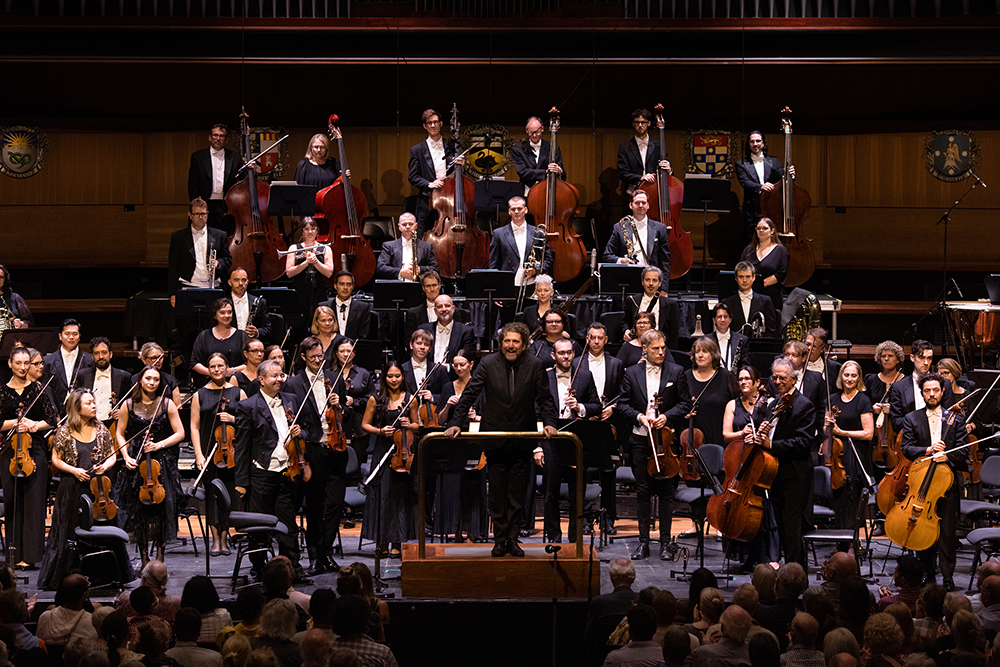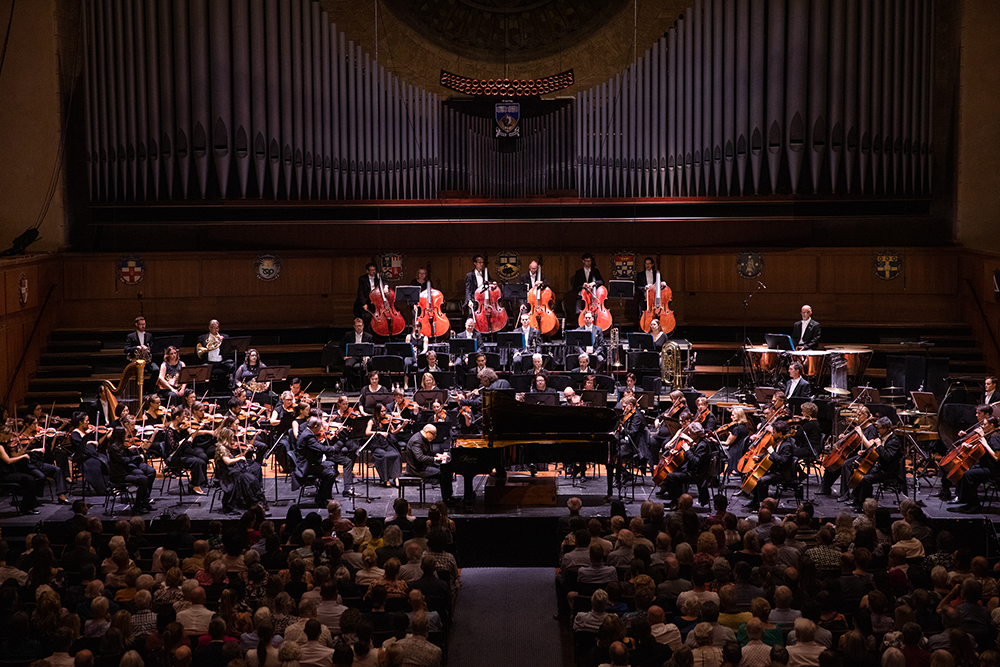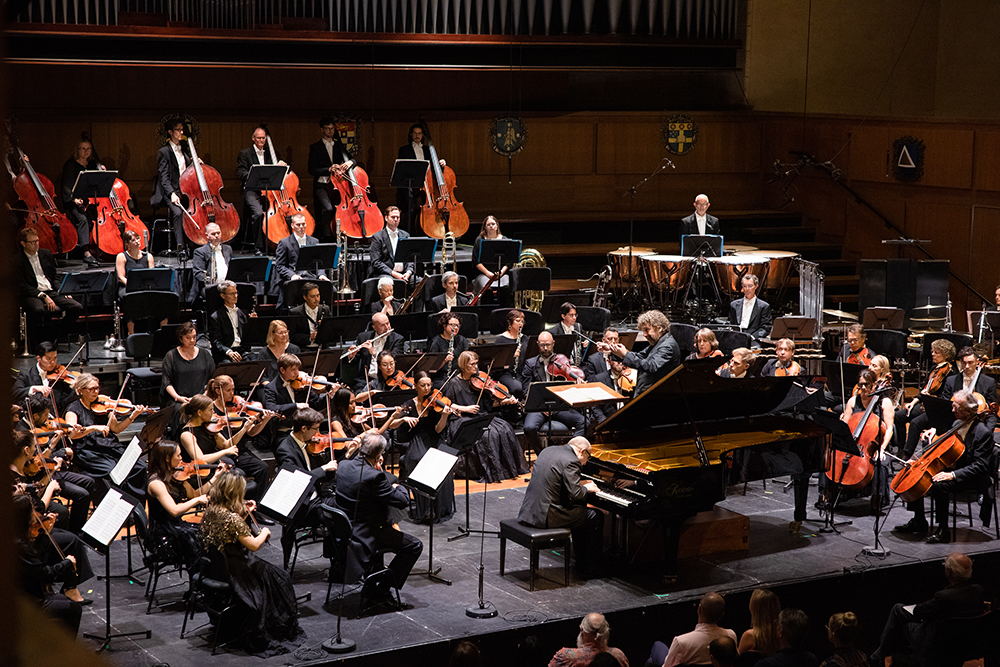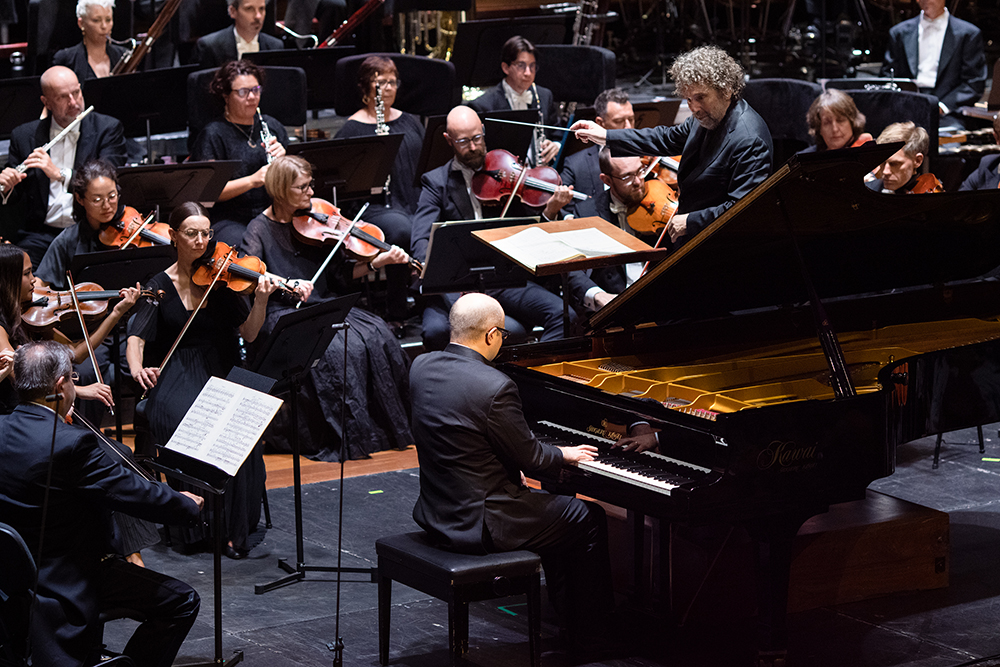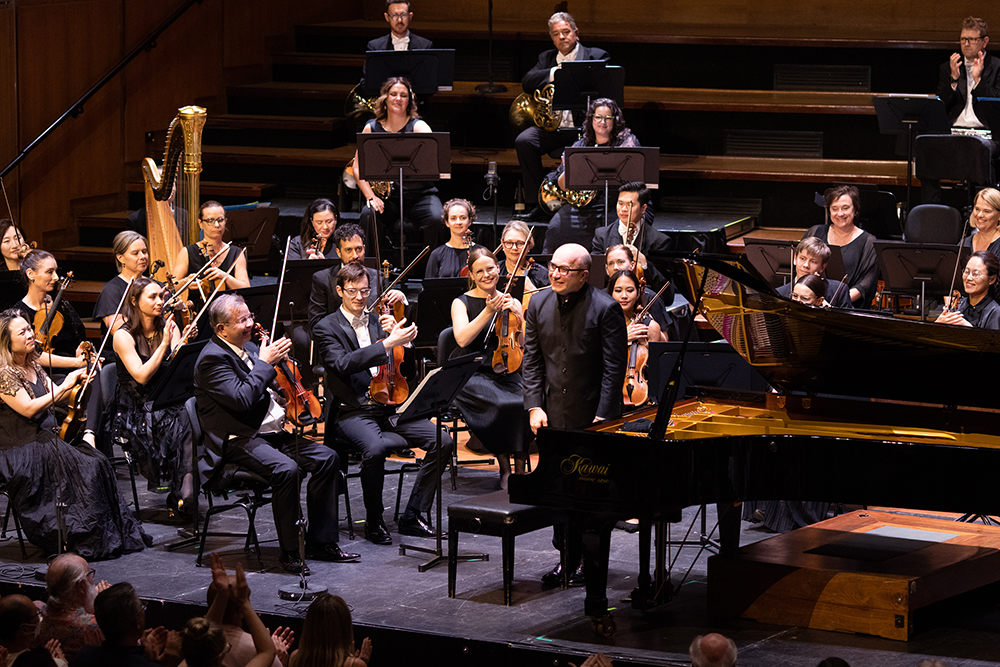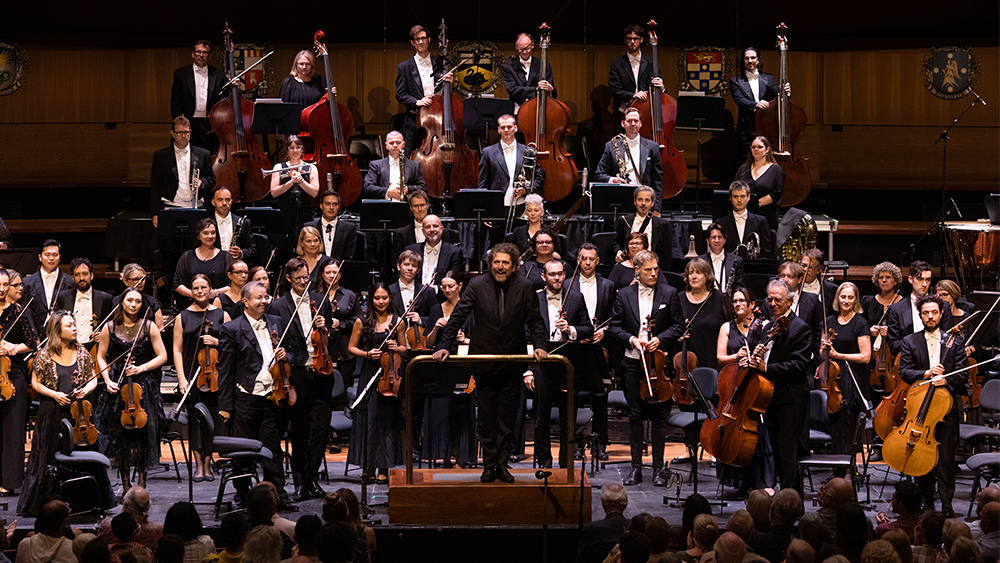
Review: WA Symphony Orchestra at Winthrop Hall
WA Symphony Orchestra at Winthrop Hall
Thursday, March 6, 2025
Some people are famous enough to have a building named after them, but it’s extremely rare for a building to be named after someone’s middle name, even when that’s what everyone called them. Sir John Winthrop Hackett, an early editor of The West Australian, is one such rare individual. But then, by the time they named Winthrop Hall on the UWA campus, there were already two Hackett Halls in Perth, one at the university and the other in the WA Museum (the Battye Library as the institution was then known).
Such is the fate of a philanthropist who bequeathed the bulk of his fortune ($53 mill in today’s money) to the establishment of the world’s first free university. Many generations of West Australians have benefited from Winthrop Hackett’s foresight and generosity.
Until the Perth Concert Hall opened in 1975, Winthrop Hall was Perth’s primary concert venue. Between 1967 and 1975, it was the home of the WA Symphony Orchestra. It’s fitting then that, during the Concert Hall’s three-year renovations, WASO should relocate there.
The orchestra’s residency began last weekend with a fine mix of new, modern, and high classical music: the world premiere of James Ledger’s The Light Fantastic, Sergei Rachmaninov’s tragi-comic masterpiece Rhapsody on a Theme of Paganini, Op. 43, and the Mona Lisa of classical music, Ludwig van Beethoven’s Symphony No. 5 in C minor, Op. 67.

The acoustics of Winthrop Hall are superb, not quite as superb as the Concert Hall but pretty damn good. The drawback of the room is that the seats are on the flat—the further back you sit, the harder it is to see the depth of the stage. To compensate, the already significant rake of the stage has been increased so that the orchestra are stacked up high.
As Principal Conductor Asher Fisch pointed out in his impromptu address, this enabled them to seat the ensemble in the conventional 19th-century configuration. Instead of tucked away behind the strings stage left, the double basses were relocated to the top row at the very back of the band, immediately below the commanding swoop of organ pipes. It’s a great spot for them, lording it over the horn players and percussionists on the second and third tiers. This also allowed the celli and violas to fan out to the edge of the stage.
For those seated in the front row, the view was up close and very personal. For those on the left of that row (stage right), the first and second violins were four feet above and five feet away, more like the view you get from a mosh pit than at your average classical concert. This made for a rare concert experience.
The show began traditionally with a welcome to country accompanied by a didge intro and an ancient indigenous song. This was especially apt in a room where the ceiling beams are etched with motifs inspired by the markings on an Aboriginal shield. Even though beneath it he wore a musician’s blacks, elder Barry Winmar’s kangaroo cloak cut an almost surreal, individual contrast to the white tie and tails of the male members of the orchestra seated around him. This single image encapsulated the duality and diversity of our rich cultural heritage.
Composer James Ledger’s day job is lecturer in composition at UWA’s Conservatorium of Music. The Light Fantastic, which opened the concert, was commissioned by WASO with the support of Geoff Stearn to commemorate the orchestra’s return to Winthrop Hall. The work was inspired by the complex play of light through the hall’s stained glass windows intercut with commemorative fireworks.
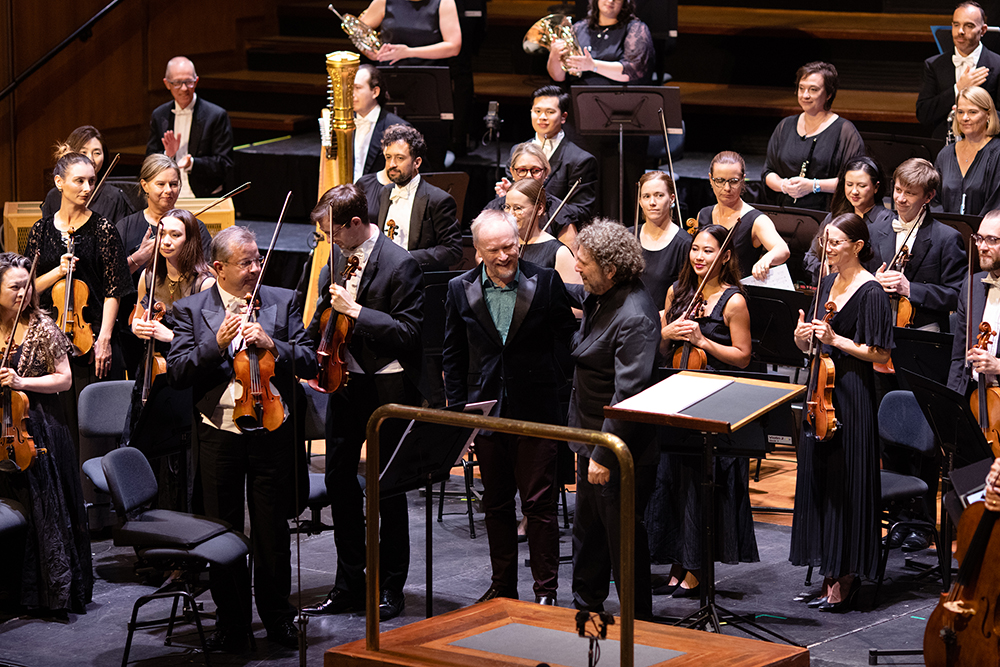
A contemporary classical work, The Light Fantastic jumped around a lot, po-mo style. From ethereal chimes (bells, glockenspiel and crotales), it moved through rumbling celli, pizzicato basses, echoing woodwinds and horns, and vibrant fanfare calls across the stage. At times it was edgy and loud, like exploding fireworks; at others calming and lyrical, like the play of morning sunlight through the hall’s yellow and tan eastern window. Powerful, provocative, grand, and fractured, it makes an important addition to the postmodern canon.
During the short break at the end of the work to reset the stage for the piano, Fisch delivered his address.
Rachmaninov’s Rhapsody was something of a comeback piece, a last more popular work that revitalised the composer’s fortunes after the poor reception of his fourth piano concerto (‘Rach 4’). Unlike the typically dark and dour works of the grand Russian tradition, the Rhapsody is capricious. Based on Paganini’s Caprice, its turgid flight of fingers up and down the keyboard are cut with quick comic flourishes—a swift interplay of notes back and forth across the strings, piano and horns, or a witty three-note run on the piano at the end of a string phrase. Along with its famous lyrical interlude, such delightful, unexpected turns countered the often gloomy feel of such high modernist works and showed a lighter side of the émigré Russian.
Guest pianist, Ukrainian/Australian, Alexander Gavrylyuk, has been described as ‘a stunningly virtuosic pianist … internationally recognised for his electrifying and poetic performances.’ This was on full display at Thursday’s concert. From the front row, it was amazing to watch his fingers fly up and down the keyboard on such complex dark chords and intricate hand-crossing runs.
At the main interval, the stage was reset again, leaving this reviewer mere feet away from the second row of first violins. This proved to be an unusual and fortunate place from which to experience Beethoven’s magnificent stroke of fate, the Fifth Symphony.
As any guitarist knows, when watching another guitarist play, your eyes remain riveted to their left (fretting) hand to see how they do it. In this case it was the left hands of the assistant concertmaster, Semra Lee, and Principal first violin, Alexandra Isted, that were the focus of attention. It was utterly intriguing to experience this well-known symphony through the lens of their violin part.
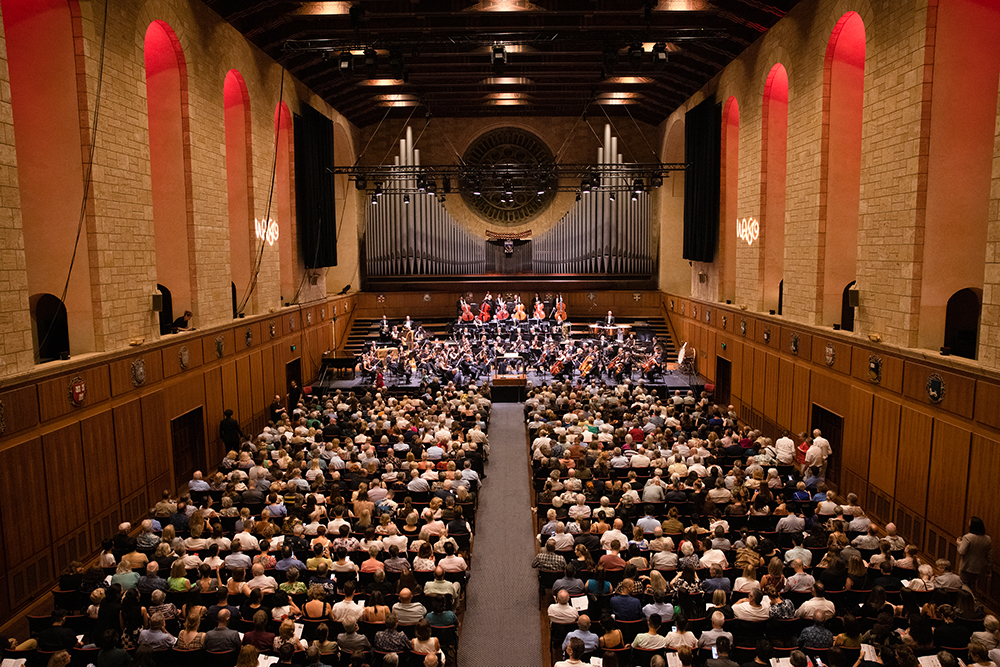
To be able to see up close what notes they played and the ones they didn’t; the way they would come in under a cello or horn phrase to enforce it, then take over to lead another; and the wonderfully intricate dance of the women’s fingers in stereo as they moved through the plethora of complex patterns. It was as though they were actually dancing with each other within the eighty-member orchestra. Not only was it mesmerising to watch, but it also provided fascinating insight into the structure of the work, a rare and privileged experience.
The sound was stunning and clear, not just in the front row but throughout the whole room. The orchestra played brilliantly and executed this wonderful work, as they had the two earlier ones, in grand style. The audience applause at the end was justifiably deep and appreciative.
There’s an old theatre adage that it is better publicity to turn away five people from a smaller venue than to have twenty empty seats in a larger one. That’s how a show becomes a hit—the word of mouth spreads like wildfire. At eleven hundred seats, Winthrop Hall is significantly smaller than the Concert Hall, so no matter how much this excellent show deserves it, it’s no surprise that the three opening concerts of WASO’s 2025 season were sold out. Hopefully the word from this fine performance will spread, and the orchestra can use this hiatus away from its home to build an even stronger subscription base.
And in case any of you were thinking that $53 mill is not a lot to establish an entire university, there is a twist in that tale. Between Hackett’s death in 1916 and UWA launching its Crawley campus in 1932, the UWA bequest was managed by a trust. The principal trustee, Alfred Langler, was a canny investor who was able to increase the value of the fund twenty-fold to roughly ₤8mill, which is $950 mill today.
That seems a more reasonable figure for such a monumental task. There is a mosaic in the foyer of Winthrop Hall memorialising Langler. Rightly so. Give him a nod next time you pass through on your way to watch WASO play. And try to get a seat up the front if you can—it makes for a truly memorable concert experience.
IAN LILBURNE
Photos by Daniel James Grant

